Menai Bridge Cricket Club - Strait Talking
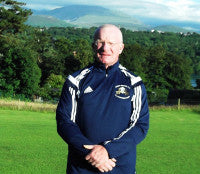
Menai Bridge Cricket Club (Clwb Criced Porthaethwy) is situated on the Isle of Anglesey in the North West of Wales just off the shores of the Menai Strait. Its most famous landmark is the Thomas Telford suspension bridge which links Menai Bridge to mainland Wales. The town, with a population just short of 4,000, is situated approximately two hours drive from Manchester and Liverpool.
Menai Bridge is also very close to both the University town of Bangor as well as the magnificent scenery of the Snowdonia National Park.
"We are the only cricket club in Wales from which you are able to see the summit of Snowden," says the club's groundsman, Keith Hughes.
The cricket club was established in 1973; prior to this, cricket in Menai Bridge was subject to nomadic playing at a number of different locations. "We are, without doubt, one of the most picturesque cricket grounds in North Wales," he confirms, proudly.
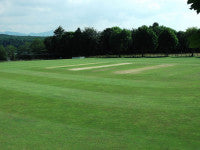
"Our most famous ex-player, and current life member, is Matthew Maynard who has previously held positions as the England Assistant Coach and Director of Cricket for Glamorgan County Cricket Club. The North Wales league also attracts a number of overseas players every season."
By day, Keith is a secondary school teacher; at any other time, he is the volunteer groundsman at the club. "Five club members are involved in volunteering their time on carrying out work at the ground. Myself, Steve Jones, Robbie Jones, Cefyn Owen and Chris Drake. In addition, members will help out if anyone is not available to carry out any tasks."
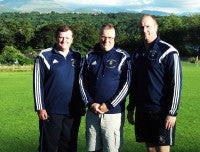
"For any additional help we use the North Wales Cricket Groundsman Association, of which I am an active member. They have two trailers of equipment which clubs in North Wales have access too. We also have Gareth Phillips as the ECB Pitch Advisor for our region."
"I have also attended courses run by Len Smith, the former head groundsman at Sophia Gardens, who comes up to North Wales on a regular basis."
"Our square is on a slight slope, so water tends to drain reasonably well. The square, when constructed, was laid on a stone and gravel base then built up with soil and loam. We have, in the past, had a problem with low clay content in our profile which we have been rectifying over the years by using Boughton County loam."
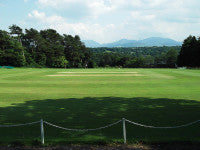
Keith goes on to explain the work undertaken through the season. "I will usually start by selecting a couple of pitches at the top of the square for early season matches as these tends to be drier due to the slope. I don't have a master plan of where I am going to play matches, which I know sounds a bit odd, but I tend to follow what I have done over the years and it seems to work for me."
"The 1st XI matches are played across the four or five central strips as they require longer boundaries. I try and prepare two pitches at the same time so, if anything untoward happens to one, then I have a back-up."
"I tend to keep the grass on the square quite long, maintaining it at about 12-15mm in length. I use the Webb ride-on mower for cutting the square and also for the first cut of a new pitch."
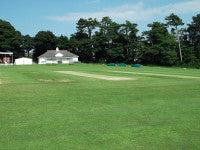
"Much of our work is done in the evenings because the lads are working full-time during the day. I can usually get to the ground after school finishes, so that gives me a couple of extra hours a week."
"I will cut out two pitches and lower the height of cut gradually over the days leading up to the match. During this period, I give the pitch a very light scarify/verticut just to get the grass to stand up. If the pitches need watering, I will apply it with a strip waterer."
"I roll as and when conditions allow. Latterly, I have found the ECB document on rolling of cricket pitches very useful as I feel we sometimes do 'over roll'."
"I tend to roll for about twenty minutes each time. But I suppose everybody has their own opinions and approaches to what suits their square. It seems to work for us here."
"We seem to be getting a lot more prolonged spells of rain. This can affect pitch preparation, as well as end of season work. Quite a few times we plan to do something and the weather intervenes, and we end up taking any old opportunity to do some work when there is a break in the weather."
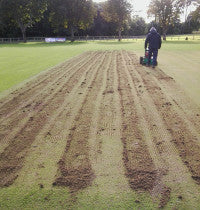
"With our double bay artificial net area, we roll with a light roller throughout the season to compact the surface. At the end of season, we lift the nets and weed kill the surrounds. We have called in the installers, ClubTurf, to lift the matting and re-level the base. During the winter we brush and vacuum-blow the net area to keep it clear of debris."
Keith has observed that the winters appear to be getting milder in recent years, which means they don't get the frosts they used to.
"During the winter, I try and aerate a couple of times up until Christmas time, if the ground conditions allow. I try and brush the square as often as I can during this period as well and remove any debris from the square and outfield. I cut the square at a height of about 20mm and in various directions, not necessarily in the direction of play. I use a rotary mower which has had its blade sharpened prior to me using it. I have even cut the square on Christmas Eve morning due to us having a dry spell at that time!"
"We endeavour to keep cutting the outfield during the winter at a height of about 25mm and sometimes cut it with a ride-on -mower collecting the grass as we go along. We spend a lot of time in the autumn collecting fallen leaves as we have a large number of hardwood trees surrounding the boundary edge. These have, though, been thinned out to allow more light to get to the outfield."

"We allow the community to use our cricket field for a variety of events beside cricket. For example, we have hosted a rounders tournament and various charity fundraising days. We have also hosted a wedding, which was something a bit different in that they spent three days erecting marquees, and then only had one day in which to take it down because we had to get it ready for our fixture on the Saturday!"
"I appreciate the problems that groundsmen have when they have major events at their grounds and the potential damage it can do to the playing surface. But, we were lucky that the wedding quests were very respectful of our facilities."
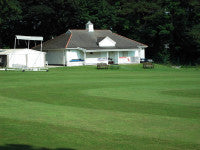
This was evident when the old chicken shed, that had served as a pavilion since the club's formation, clucked it's last cluck. "We now have a first rate pavilion thanks to the clubs fundraising efforts," concludes Keith, "and are currently looking at developing our ground even further. With the support of the local community firmly behind us and the number of members increasing all the time, Menai Bridge Cricket Club has an exciting future!"
What's in the shed?
Stothert and Pitt roller
Jacobsen T-Plex 185D ride-on gang mower
Dennis FT 160 Mower
Hayter Ambassader 2 mower
Webb 21" ride on mower
Suffolk Punch petrol mower with cutting and scarifier reels
Hayter rotary mower
Westfield/Lawn Flite ride-on mowers with grass collection.
Brushcutter
Vacuum blower
Access to the ECB Machinery Trailers at any time
Anglesey Mowers in Amlwch carry out servicing, but the basic servicing is undertaken by Keith and his team
Machinery is financed by ECB grants. Also secondhand items purchased over the years
Keith's wishlist includes an Auto-roller, a full set of attachments for the Dennis FT 160 and a new Dennis mower
